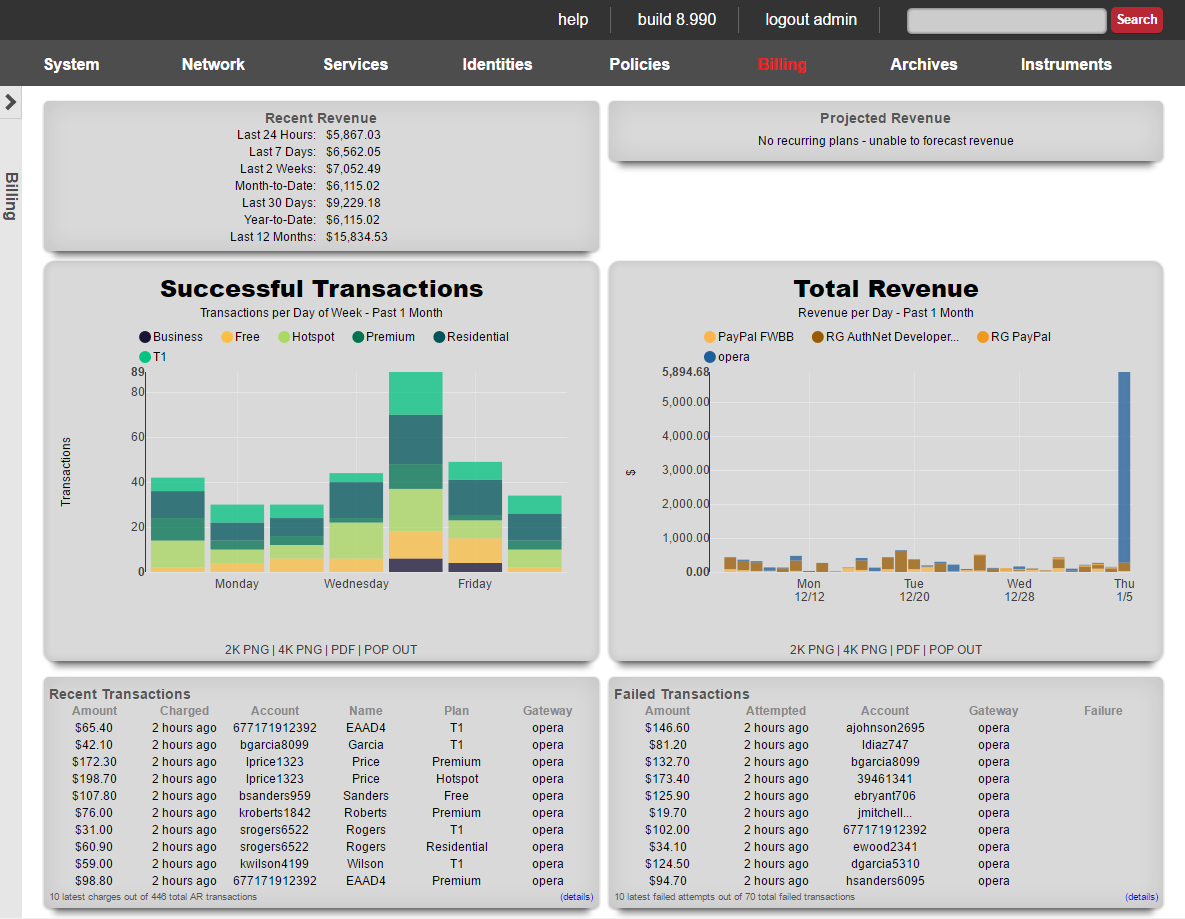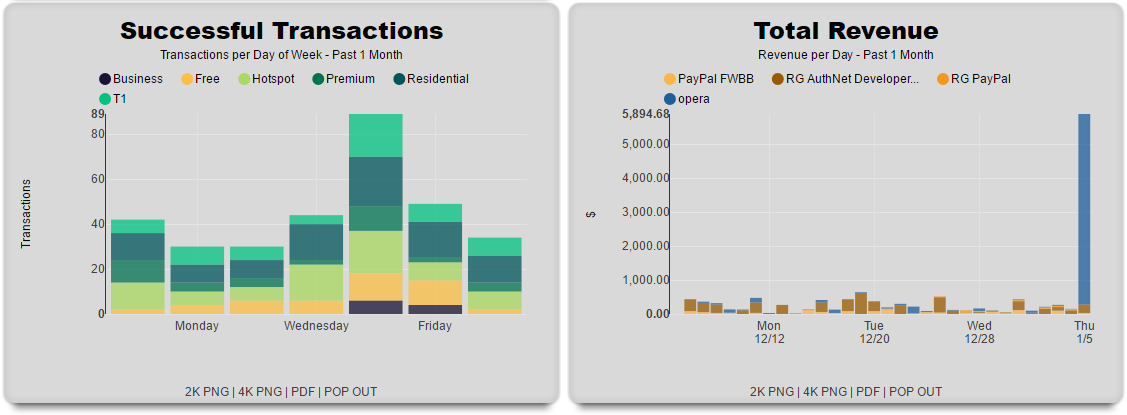Billing
Zero operator intervention provisioning is a key benefit of using an rXg as the head-end for revenue generating networks. Automated subscriber provisioning reduces costs and increases reliability for the operator while simultaneously providing subscribers with instantaneous changes to their network experience. rXg automated provisioning enables the operator to deploy a broad spectrum of product offerings with unparalleled agility through a combination of internal and external integrations.
The rXg incorporates hundreds of capabilities that are typically deployed using individual point solutions resulting in a the rack of equipment and a jumble of virtual machines. Dozens of third-party integrations with the distribution infrastructure equipment enable operators to create unprecedented mash-ups with rXg internal capabilities. The breadth of capabilities enabled by the rXg combined with the in-depth control of each individual feature enables operators to generate profits through entirely new business models that leverage automation, microtransactions and subscriptions.
Automated billing is a key component of zero operator intervention provisioning. The rXg billing engine allows operators to define a set of billable items and tie these to deliverables. The full spectrum of rXg features may be tied through deliverables. Examples of possible deliverables with fully automated and instanteous subscriber provisioning may include, but are not limited to:
| Layer | Example Deliverables |
|---|---|
| Layer 1 | Enable Ethernet switch port(s), custom SSID name |
| Layer 2 | Admission to a particular VLAN, enable temporary group VLAN |
| Layer 3 | cgNAT vs dedicated public IP, multiple public IPs, choice of a particular uplink |
| Layer 4 | throughput rate limits and guarantees, usage quotas |
| Layer 5 | time online, VPN |
| Layer 7 | Content filtering, deep packet inspection |
Subscriptions are typically established using the rXg integrated captive portal. End-users typically arrive at the portal through forced browser redirection at which point they are asked to select and pay for a usage plan. Once payment has cleared, the rXg automatically provisions the policy defined by the end-user. During the course of normal RGN operation where end-users are signing up and selecting services, the RGN operator is a passive recipient of notifications. For many RG Nets customers, once the rXg is installed and configured, they can sit back and simply watch as the money flows into their bank accounts.
The billing menu enables the operator to access the views associated with configuring the rXg billing system. The operator uses the billing menu to configure usage plans, credit card merchant gateways as well as promotional coupons. The billing menu also enables operators to access historical billing information.
Billing Dashboard
The billing dashboard presents an overview of recent end-user signups, transactions and the plans that are currently being offered.

The dialog along the top of the billing dashboard presents a summary of recent revenue and activity.

In the center of the billing dashboard are graphs that presents a summary of revenue and transaction trends.

The amount charged, plan selected and merchant used are displayed of recent transactions are displayed. Click on the details link to navigate to the complete transaction log.
Below the billing dashboard are dialogs that presents a summary of the recent transactions.

The account, name and group association of the plans are displayed in the dialog. Click on the details link to navigate to the plan configuration page.